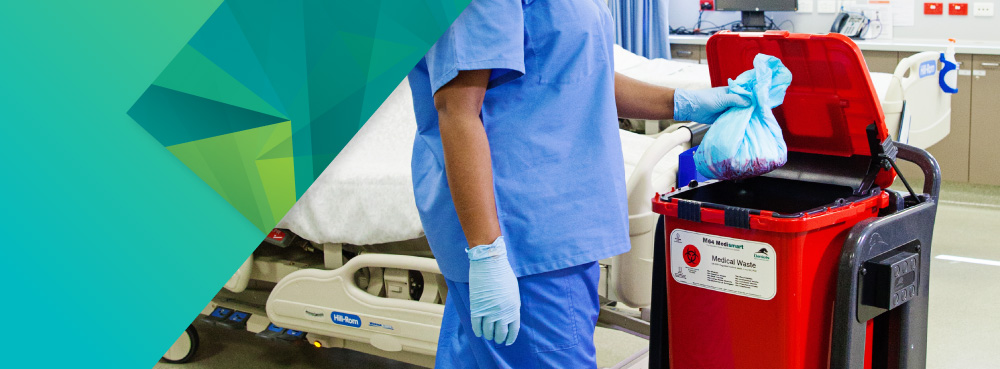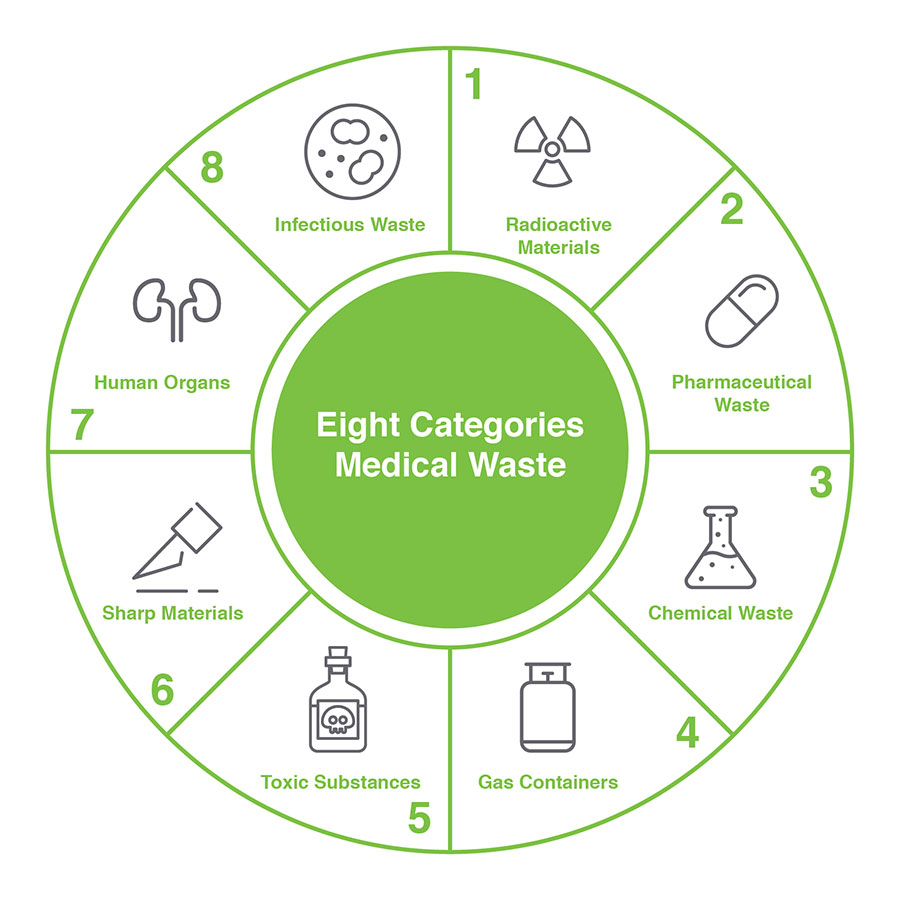Safeguarding Health: Expert Medical Waste Removal Services for a Clean Atmosphere
Wiki Article
Keep Ahead of Regulations: Expert Recommendations on Medical Garbage Disposal
In a world where the healthcare market is regularly evolving, it is necessary for clinical facilities to stay ahead of policies when it involves the correct disposal of medical waste. With strict standards and regular governing adjustments, it can be testing to navigate the complexities of this procedure. With skilled recommendations, centers can make sure conformity and alleviate dangers connected with incorrect waste disposal. From understanding the different categories of medical waste to implementing the appropriate collection and partition approaches, this conversation will offer important insights and actionable tips to help centers remain in advance of policies in the ever-changing landscape of medical waste disposal.Understanding Medical Waste Categories
Understanding clinical waste classifications is important for correct disposal and administration in medical care facilities. Clinical waste refers to any type of waste created by health care tasks that may present a threat to public health and wellness or the setting. It is important to classify medical waste precisely to guarantee its safe handling, transport, therapy, and disposal.There are numerous categories of clinical waste that medical care facilities need to be aware of. One of the most common classifications consist of infectious waste, pathological waste, sharps waste, pharmaceutical waste, and chemical waste. Each classification has details standards and policies for its correct management and disposal.
Contagious waste consists of products contaminated with blood or other bodily liquids, such as handwear covers, dress, and laboratory cultures. Pathological waste describes human tissues, organs, or body parts that need unique handling and disposal. Sharps waste consists of made use of needles, syringes, and various other sharp objects that can cause injury and transfer infections. Pharmaceutical waste makes up ended, extra, or infected drugs that need careful handling and disposal. Finally, chemical waste consists of solvents, anti-bacterials, and various other chemical materials made use of in medical care centers.
Staying Up-To-Date With Regulatory Modifications
Staying current with regulatory changes is important for health care centers to make sure compliance and appropriate management of medical garbage disposal. medical waste removal near me. With laws frequently advancing, it is crucial for medical care centers to remain updated to avoid penalties, fines, and potential harm to the setting and public healthTo remain ahead of regulative changes, healthcare centers need to develop a system for monitoring and monitoring updates. This can be done by signing up for regulatory e-newsletters, attending workshops and seminars, and actively getting involved in industry associations. In addition, facilities need to designate a team member or group in charge of remaining informed and sharing information to pertinent stakeholders.
Regular communication with regulatory companies is likewise vital. Health care centers should develop relationships with regional, state, and government agencies to ensure they understand any type of adjustments in regulations that may influence their waste management methods. This can be done via regular meetings, involvement in public remark periods, and positive involvement with regulatory agencies.
Additionally, healthcare centers should take into consideration partnering with waste administration firms that focus on clinical waste disposal (medical waste disposal services with WasteX). These companies are commonly fluent in the most up to date guidelines and can give guidance and support to guarantee conformity
Applying Proper Collection and Segregation Techniques
To successfully take care of clinical garbage disposal, health care facilities need to establish appropriate collection and segregation approaches according to regulative guidelines. Carrying out these approaches ensures the safe handling and disposal of possibly unsafe products, shields the atmosphere, and decreases the danger of infections and injuries to health care workers and the basic public.
Proper collection and segregation techniques involve the use of assigned containers and labeling systems. Healthcare facilities should offer plainly labeled containers for different sorts of clinical waste, such as sharps, contagious waste, pharmaceutical waste, and non-hazardous waste. These containers should be color-coded and clearly marked to prevent confusion and advertise simple recognition.
In addition, health care centers need to educate their team on the appropriate treatments for gathering and setting apart clinical waste. This includes informing them on the different kinds of waste, the suitable containers to utilize, and the significance of complying with standards and policies. Normal training sessions and correspondence course need to be conducted to make sure that employee stay current on best practices.
Additionally, healthcare facilities ought to develop a system for normal collection pop over to this site and disposal of you could try these out clinical waste. This might include partnering with certified waste management firms that specialize in clinical garbage disposal. These firms will make certain that the accumulated waste is moved and dealt with in conformity with regulatory demands.
Picking the Right Disposal Approaches

Incineration is one of one of the most common and efficient methods for dealing with specific types of medical waste, such as pathological waste and sharps. It includes the regulated burning of waste at high temperature levels, reducing it to ash. However, incineration can launch unsafe toxins right into the air and add to air pollution.

Other disposal methods include chemical therapy, microwave therapy, and landfilling. Chemical therapy includes using chemicals to neutralize the waste and decontaminate. Microwave treatment makes use of microwave power to warm and disinfect the waste. Landfilling includes burying the waste in an assigned land fill area (medical waste disposal services with WasteX). Landfilling ought to be the last resort due to the prospective danger of contamination to soil and groundwater.
Making Sure Conformity Via Documentation and Training
After very carefully taking into consideration the proper disposal methods for clinical waste, health care facilities need to guarantee conformity with regulations and minimize environmental impact by carrying out effective documentation and training treatments. This action is important in keeping a secure and sustainable setting for both medical care workers and the basic public.
Health care workers who handle medical waste needs to get ideal training on waste segregation, dealing with, and disposal treatments. By giving extensive training, health care centers can empower their team to make enlightened decisions and minimize the threat of inappropriate waste disposal.
Final Thought
To conclude, staying in advance of regulations in clinical garbage disposal is crucial for healthcare centers. medical waste removal service. Comprehending the different categories of clinical waste, remaining updated with regulatory adjustments, applying appropriate collection and segregation methods, picking the proper disposal techniques, and guaranteeing compliance via paperwork and training are all important steps. By adhering to these guidelines, medical waste disposal services with WasteX healthcare companies can efficiently manage and get rid of of clinical waste in a accountable and safe fashionFrom comprehending the various classifications of medical waste to applying the right collection and partition methods, this conversation will provide beneficial insights and workable suggestions to help centers stay in advance of regulations in the ever-changing landscape of medical waste disposal. - medical waste disposal services with WasteX
The most usual groups include infectious waste, pathological waste, sharps waste, pharmaceutical waste, and chemical waste. Health care facilities must give plainly labeled containers for different types of medical waste, such as sharps, infectious waste, pharmaceutical waste, and non-hazardous waste. Health care facilities must develop a detailed system to videotape and track all facets of clinical waste disposal, consisting of kinds of waste created, quantities, and disposal approaches utilized. Healthcare workers who handle clinical waste must obtain appropriate training on waste segregation, managing, and disposal procedures.
Report this wiki page